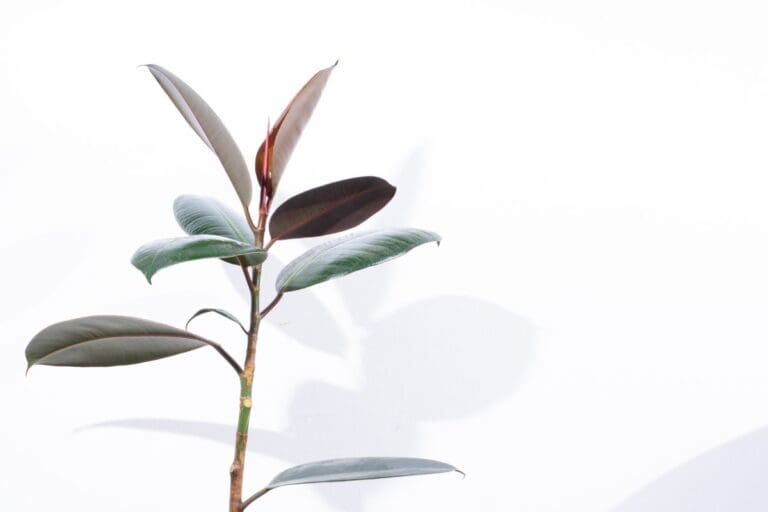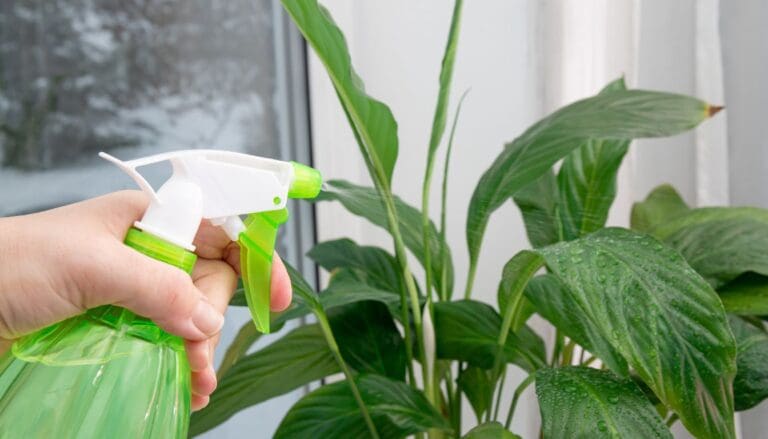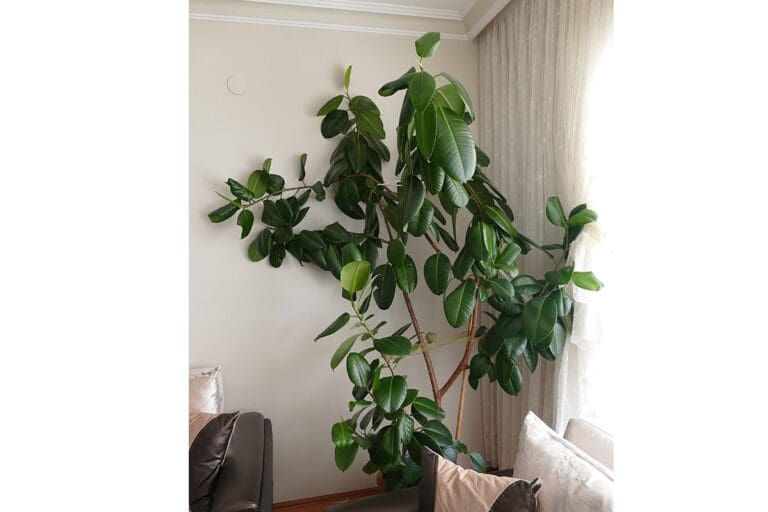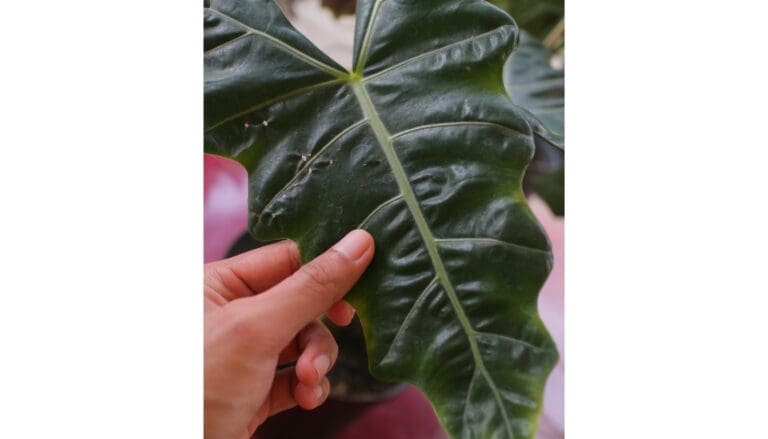Is Arrowhead Plant Poisonous? (Cats, Dogs and Small Animals)
Arrowhead plant or Syngonium is a popular tropical plant that thrives indoors. But if you have pets in the house, you must figure out whether arrowhead plants are poisonous for them or not.
Arrowhead plants contain insoluble calcium oxalate crystals that are poisonous for pets. The sap of this plant contains these crystals, which makes the entire plant toxic. If your pet ingests the arrowhead plant, rush them to a vet, as they can experience oral irritation, drooling, and vomiting.
This article will explain the toxicity of the arrowhead plants and how your pet might react if it touches or consumes the plant.

Please note: Simplify Plants is reader-supported. Some links in the post are affiliate links and I get a commission from purchases made through links in the post.
Is arrowhead plant pet-friendly?
Arrowhead plants are in no way pet-friendly, and you should not let your pets come close to this plant.
According to ASPCA, arrowhead plants are toxic to cats, dogs, and horses.
You should not let your dogs, cats, horses, rabbits, guinea pigs, or birds come in touch with the plant.
Arrowhead plants rate three on the toxicity scale and contain harmful calcium oxalate crystals that are harmful to your pets.
The effect of the toxicity will depend on how much of the plant your pet has ingested.
If the sap gets on your pets’ skin, it can cause skin irritation.
If your pet takes a bite from a leaf or any other part of the plant, the problems can start with swelling and, in worse cases, cause diarrhea and vomiting.
How toxic are arrowhead plants?
Arrowhead plants belong to the Araceae family and contain calcium oxalate crystals that make them toxic.
In the toxicity scale, arrowhead plants rate 3.
It is toxic not only for pets but also for humans.
Therefore, you must keep the plant away from both children and pets and handle it carefully.
Which parts of the arrowhead plant are poisonous?
The calcium oxalate crystals of the arrowhead plant make it poisonous, and these crystals keep increasing with the plant’s maturity.
All plant parts contain calcium oxalate crystals.
Therefore, the entire plant and all its parts can be termed poisonous.
Signs of arrowhead plant poisoning in pets

In case your pet consumes any part of the arrowhead plant, it can cause oral irritation, preventing them from eating.
Some classic signs that your pet might give out if it ingests the arrowhead plant are:
- Oral irritation
- Swelling of mouth, lips, or tongue
- Excessive drooling
- Vomiting
- Loss of appetite
- Diarrhea
- Stomach ache
- Breathing troubles
The symptoms are usually mild, but if your pet ingests a lot of the plant, it can experience more intense issues.
If you notice one or more of the mentioned signs in your pet, take it to the vet immediately instead of trying any remedy yourself.
Which pets are vulnerable to arrowhead plant poisoning?
All pets will be affected by the arrowhead plant if their skin comes in touch with the toxic sap or if they ingest any part of the Syngonium.
Pets such as cats and dogs, small animals like rabbits and guinea pigs, and horses are vulnerable to arrowhead plant poisoning.
The most common pets found in most houses are cats and dogs.
Since pets might not understand what is good and bad for them at first, they might try to touch the plant, play with it, or taste it.
Therefore, if you have pets in the house, make sure to keep the arrowhead plant away from them.
The toxic calcium oxalate crystals in these plants can cause serious health issues.
Is the arrowhead plant toxic to cats?

The arrowhead plant is toxic to cats due to the calcium oxalate crystals.
If your cat takes a bite of the plant, the crystals will get released in its mouth and cause immediate irritation.
This can make the mouth swell and cause oral pain.
If the crystals pass on to the digestive system, it can cause even more damage.
The intensity of the effects will again depend on the amount of the plant that your cat ingests.
Signs of arrowhead plant poisoning in cats
If your cat ingests your Syngonium, you will notice signs such as:
- A burning sensation
- Oral irritation
- Swelling
- Difficulty in swallowing
- Excessive drooling
- Cardiac abnormalities
- Loss of appetite
- Increased salivation
- Vomiting
- Diarrhea
- Depression
- Nausea
If you notice these unusual symptoms, you should take your cat to the nearby vet clinic as soon as possible.
How to keep the arrowhead plant away from cats?
You can bring an arrowhead plant home even if you have a pet cat.
But before that, you must understand the ways of keeping your cat away from the plant.
- If you have a room where your cat can’t enter, you can place your arrowhead plant in that room. But ensure that the plant gets enough light and proper cultural conditions in that room.
- Aluminum foil is a great way of keeping cats away from any place. Since cats hate the sound of aluminum foil, they won’t enjoy walking on it. So you can place aluminum foil around your arrowhead plant.
- There are many cat repellents available in the market. You can get one and spray it around your arrowhead plant to keep your cat away from it.
- You can sprinkle tea leaves around your arrowhead plant to prevent cats from coming there.
- Since cats don’t enjoy the strong smell of orange or lemon juice, you can spray and sprinkle some around your Syngonium.
Is the arrowhead plant toxic to dogs?

Arrowhead plants are toxic for dogs due to the same calcium oxalate crystals.
Like cats, your dog can also experience a burning sensation and irritation in the mouth when they taste the arrowhead plant.
The calcium oxalate crystals pierce the tissue in the mouth and throat that cause intense pain and irritation to your dog.
If your dog consumes the arrowhead plant in a larger quantity, it can experience other health issues, and you will need to consult the vet to fix it.
Signs of arrowhead plant poisoning in dogs
If your dog ingests the arrowhead plant, you might notice many of the following signs:
- Pawing at the mouth
- Oral irritation
- Excessive drooling
- Loss of appetite
- Vomiting
- Diarrhea
- Nausea
- Difficulty in swallowing
- Dilated eyes
Upon noticing any of these signs, take your dog to the nearest vet and start its treatment.
How to keep the arrowhead plant away from dogs?
You can train your dog to stay away from the arrowhead plant but if you want to be tension-free, take the help of the following methods.
- Buy a dog repellent from the market and apply it to your arrowhead plant.
- Consider spraying apple bitter or vinegar to your Syngonium to keep the dogs away.
- Place the arrowhead plant in a room where your dog can’t reach.
- Sprinkle powdered mustard or red pepper flakes around your arrowhead plant. These will irritate your dog and send it away.
Is the arrowhead plant toxic to small animals?
Arrowhead plants are toxic for small animals such as guinea pigs.
The calcium oxalate crystals that affect your cats and dogs can cause more severe problems for small animals like guinea pigs and rabbits.
These animals love to munch on plants and might end up munching on any part of the arrowhead plant and get affected by the toxic oxalate crystals.
Therefore, you must keep these small animals away from the reach of the arrowhead plant.
If the small animals consume the arrowhead plant by mistake, it can result in severe health issues.
Signs of arrowhead plant poisoning in small animals
Small animals will also show different signs if they are affected by arrowhead plant poisoning.
- Scratching at the mouth
- Restlessness
- Diarrhea
- Increased salivation
- Nausea
- Vomiting
- Difficulty swallowing
- Unusual postures
- Increased urination
How to keep small animals away from arrowhead plants?
Small animals like guinea pigs are delicate, and you must never allow them to come near the arrowhead plants to prevent all issues.
- You can keep your arrowhead plants at a height or use hanging baskets to hang them. The small animals will not be able to reach them.
- Mix 1 teaspoon Lysol with 1 gallon of water and spray it on your arrowhead plant.
- Many small animals don’t enjoy the smell of onions. So you can place some onions around your Syngonium.
- You can dust your arrowhead plant with some plain talcum powder to keep the small animals away.
- You can sprinkle dried sulfur around your arrowhead plant to prevent small animals from coming to the plant.
What to do if your pets ate the arrowhead plant?
Since you know that arrowhead plants are toxic to pets, you must ensure they can’t reach the plant.
But if your pets somehow eat the arrowhead plant accidentally, you will notice the signs I mentioned earlier in this article.
Although you must visit the vet as soon as possible instead of trying something out yourself, you can try these to give some relief to your pet.
- First, you must wash the mouth and paws of your pet with clean water to get rid of the toxic calcium oxalate crystals.
- If you notice that your pet is pawing at the mouth, you can offer ice cubes or cold milk and encourage the pet to have it. This will reduce oral irritation and pain to some extent.
- Next, you should consult the vet or take your pet to the nearest clinic for treatment. The vet will continue the remaining treatment.
- If the condition is severe, the vet might ask you to hospitalize your pet for treatment.
Final words
Arrowhead plant or Syngonium contains calcium oxalate crystals to protect itself from any danger in the wild. These crystals are poisonous for both humans and pets.
If you have pets in the house, you must be careful after bringing the arrowhead plant home. You must find a safe place for the Syngonium where it can get all the cultural conditions it needs and also stay away from the pets.
If your pet consumes the arrowhead plant by mistake, you must consult the vet and start its treatment immediately so your pet can recover fast.
Also read: 21 Best Pet Safe Indoor Plants(+Basic Care Guide)
Reference: Also read: Houseplants and Ornamentals, Pet poison online, Toxic plants, and companion animals.
Recommended Garden Supplies
| Product Image | Our Recommended Gardening Supplies | Check Offers! |
|---|---|---|
Top Top
Top
Top
Top
Top
Top
Top
Top | rePotme Houseplant and Tropical Classic Potting Soil Mix | Check Offer On Amazon |
 Top
Top
Top
Top
Top
Top
Top
Top | Espoma Organic Indoor Plant Food | Check Offer On Amazon |
 Top
Top
Top
Top
Top
Top
Top
Top | GooingTop LED Grow Light 6000K Full Spectrum Clip Plant Growing Lamp | Check Offer On Amazon |
 Top
Top
Top
Top
Top
Top
Top
Top | Soil Moisture Meter | Check Offer On Amazon |
 Top
Top
Top
Top
Top
Top
Top
Top | Govee Hygrometer Thermometer, Bluetooth Enabled! | Check Offer On Amazon |
 Top
Top | LEVOIT Humidifiers for Large Room(Best For Plants) | Check Offer On Amazon |
 Top
Top
Top
Top
Top
Top
Top
Top | Upgraded DIY Automatic Drip Irrigation Kit, 15 Potted Houseplants Support | Check Offer On Amazon |
 Top
Top
Top
Top
Top
Top
Top
Top | Stainless Steel Heavy Duty Gardening Tool Set | Check Offer On Amazon |
 Top
Top
Top
Top
Top
Top
Top
Top | Bonide Insecticidal Soap | Check Offer On Amazon |
 Top
Top
Top
Top
Top
Top
Top
Top | Bonide 32 oz Spray Neem Oil for Organic Gardening | Check Offer On Amazon |
 Top
Top
Top
Top
Top
Top
Top
Top | Garden Safe Fungicide | Check Offer On Amazon |






